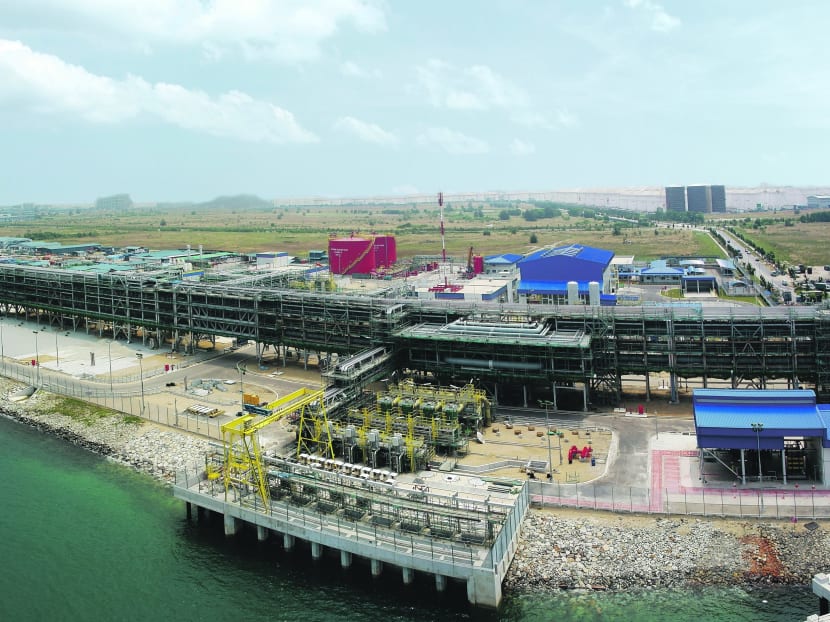Second LNG terminal needed to meet trading hub goal
SINGAPORE — The Republic may have commenced commercial operations of its S$1.7-billion liquefied natural gas (LNG) terminal only two months ago, but it will need to consider pushing ahead with a second facility if it wants to achieve its goal of becoming a leading trading centre for Asia’s growing LNG market.

Singapore’s first LNG terminal opened only two months ago, but an additional facility could double its storage capacity to help meet rising regional demand. TODAY file photo
SINGAPORE — The Republic may have commenced commercial operations of its S$1.7-billion liquefied natural gas (LNG) terminal only two months ago, but it will need to consider pushing ahead with a second facility if it wants to achieve its goal of becoming a leading trading centre for Asia’s growing LNG market.
Asia is the fastest-growing gas market worldwide and is expected to become the second-largest by 2015, according to an International Energy Agency report.
With demand rising from Japan, South Korea and Taiwan — the backbone of the global LNG market — as well as China and India, an additional facility that could double Singapore’s storage capacity for the fuel would help it fulfil its ambition.
Although a study commissioned by the Energy Market Authority on the feasibility of a second terminal is yet to be completed, a source close to the process is confident that the project will materialise.
“It’s just a matter of identifying a suitable site for the project. We need the second terminal if we seriously want to be Asia’s leading trading hub for LNG,” the source said, adding that an additional terminal with an annual throughput capacity of nine million tonnes could cost US$2 billion (S$2.53 billion).
A spokesperson for the Ministry of Trade and Industry confirmed that a feasibility study for a second terminal is ongoing, but added that no decision has yet been reached.
A spokesman for Singapore LNG Corporation, operator of the first terminal on Jurong Island, added: “There was a paper on the proposal in November, but I have not heard anything since about the project.”
If the proposed second terminal goes ahead, it would not be located on Jurong Island in order to reduce security and accident risks, the source said.
As an indication of the importance of the natural gas market, Temasek Holdings recently set up an investment unit focused on LNG and to partner leading industry players to source LNG for customers in Singapore as well as in growing Asian markets.
Pavilion Energy, which is chaired by Singapore Power Chairman Hassan Marican (who was formerly President and Chief Executive of Malaysian energy giant Petronas) has an initial authorised capital of S$1 billion.
Temasek also recently set up Pavilion Gas to manage upstream gas activities, including distribution and trading, here and in the region. The company touts several big names on its management, including former CapitaLand Holdings Chief Executive Liew Mun Leong as Chairman, and Seah Moon Ming, who is also acting as Group CEO of Pavilion Energy, as CEO.
The decision to build the first terminal to support Singapore’s energy diversification strategy was made in 2006, but actual construction of the project started only in 2010.
The terminal, which currently has an annual throughput capacity of 3.5 million tonnes, delivered its first cargo in May this year. Its capacity will rise to six million tonnes when a third tank is completed some time towards the end of this year.
Plans were announced last October by Singapore for a fourth tank and associated regasification facilities — which is likely to cost more than S$500 million — to be added to the terminal by 2017 to raise its capacity to nine million tonnes.
Singapore’s LNG consumption is expected to hit three million tonnes per annum by 2015.
Before the terminal was built, it had to rely on natural gas piped in from Malaysia and Indonesia, under contracts that last until 2023 and at prices said to be among the world’s highest at between US$15 and US$20 per million Btu (British thermal units), much more than what others in the region are paying.





